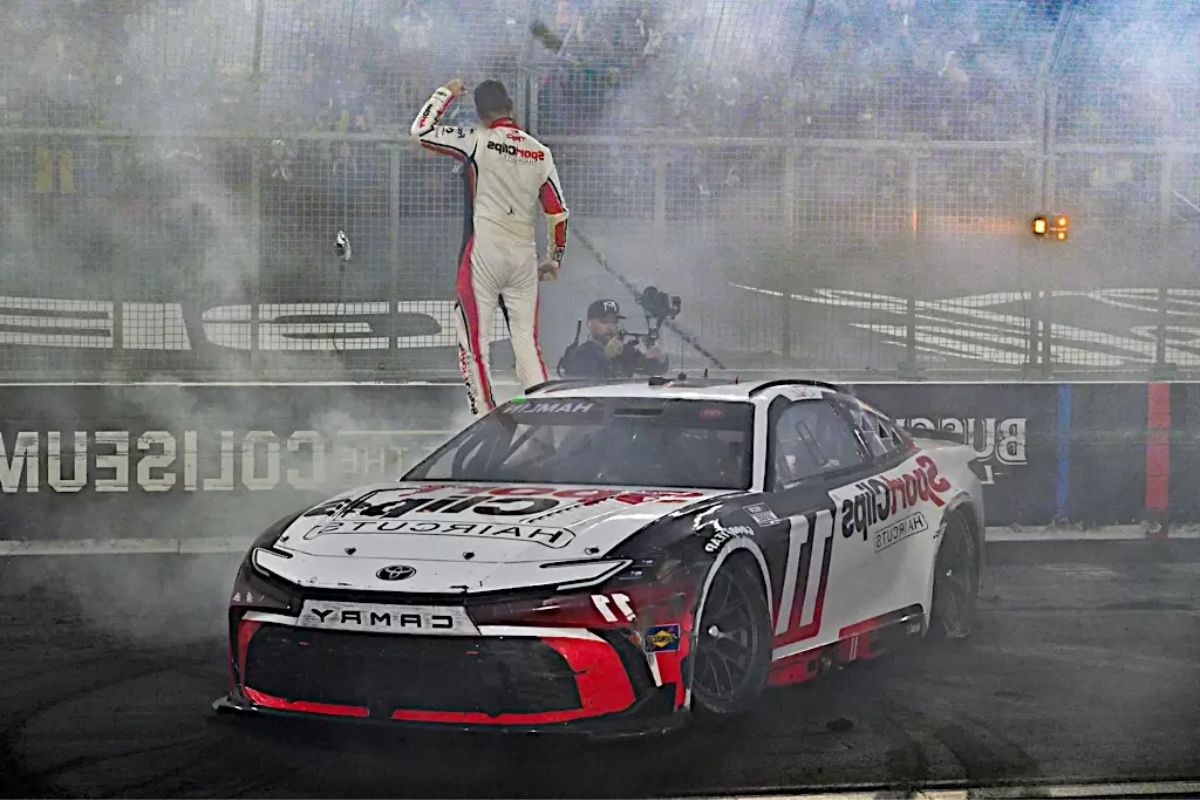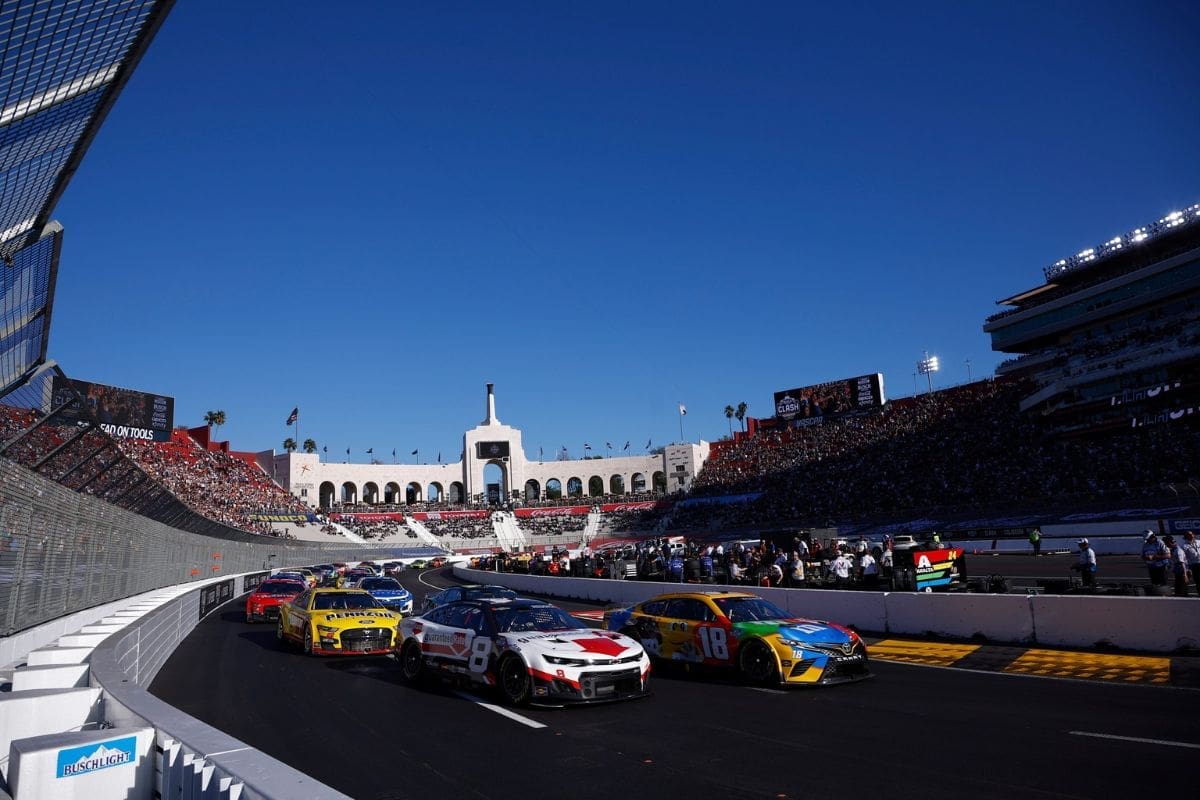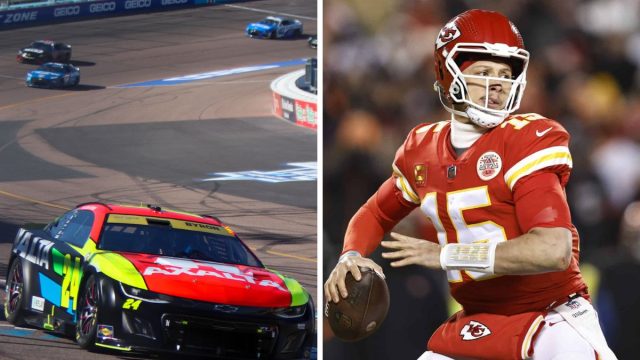NASCAR Vs. NFL: The recent overhaul of the sports scheduling landscape, particularly the overlapping of NASCAR races and NFL games, presents a significant dilemma for fans of both arenas. This conflict not only forces a split in viewership but also puts great strain on broadcasters who must now navigate this clash with savvy programming choices. With major NASCAR playoff races coinciding with key NFL matchups, particularly on Sundays throughout the fall, the heart of both seasons, fans are frequently compelled to choose between their loyalties to motorsports and football. The implications of these scheduling decisions extend beyond mere programming logistics, touching on broader issues of sports culture, fan engagement, and media consumption.
Key Takeaways
- Overlapping schedules of NASCAR and NFL from September to November lead to divided fan attention and viewership.
- Networks offer multi-platform broadcasting to mitigate viewing conflicts, allowing access to both sports.
- Strategic broadcast scheduling and exclusive streaming content enhance the overall fan experience during overlapping events.
- Financial accessibility is improved through bundled packages and partnerships with streaming platforms like ESPN Plus and Amazon Prime Video.
- Fans benefit from diverse viewing options, ensuring they do not have to choose between watching NASCAR or NFL games.
Clash of Schedules: NASCAR and NFL Overlap
The 2024 sports calendar presents a significant scheduling conflict as NASCAR playoff races and NFL games coincide, challenging fans to prioritize their weekend sports viewing. This overlap not only impacts fan participation but also stretches the capabilities of broadcasters and venue operators who must plan carefully to optimize audience engagement and operational efficiency.
From September through November, the scheduling overlap is particularly pronounced with NASCAR’s playoffs, a series of high-stakes races critical for determining the season’s champion, coinciding with the heart of the NFL season, including key matchups likely influencing playoff landscapes. This confluence requires that fans either choose one event over the other or find ways to multitask their viewership.
Toyota-Owners-400-Viewership-2.jpg” alt=”NASCAR Vs. NFL (2)” width=”1200″ height=”800″ srcset=”https://slicksandsticks.com/wp-content/uploads/2024/04/Toyota-Owners-400-Viewership-2.jpg 1200w, https://slicksandsticks.com/wp-content/uploads/2024/04/Toyota-Owners-400-Viewership-2-300×200.jpg 300w, https://slicksandsticks.com/wp-content/uploads/2024/04/Toyota-Owners-400-Viewership-2-1024×683.jpg 1024w, https://slicksandsticks.com/wp-content/uploads/2024/04/Toyota-Owners-400-Viewership-2-768×512.jpg 768w, https://slicksandsticks.com/wp-content/uploads/2024/04/Toyota-Owners-400-Viewership-2-630×420.jpg 630w, https://slicksandsticks.com/wp-content/uploads/2024/04/Toyota-Owners-400-Viewership-2-150×100.jpg 150w, https://slicksandsticks.com/wp-content/uploads/2024/04/Toyota-Owners-400-Viewership-2-696×464.jpg 696w, https://slicksandsticks.com/wp-content/uploads/2024/04/Toyota-Owners-400-Viewership-2-1068×712.jpg 1068w” sizes=”auto, (max-width: 1200px) 100vw, 1200px” />
The logistical challenges are manifold. Broadcast networks must decide which event to prioritize on their main channels and how to effectively use alternative channels or streaming services to ensure thorough coverage. This decision is influenced by historical viewership data, market demographics, and advertising commitments, all of which play a critical role in shaping the viewing experience.
For venue operators, particularly in markets where both NASCAR tracks and NFL stadiums are located, the challenge extends to traffic management, parking, and local business engagement. Cities like Charlotte and Miami, which host both sports, need to prepare for increased demand on local infrastructure and services during event weekends.
NASCAR vs. NFL: A Clash of Events
On September 8, sports enthusiasts face a scheduling conundrum as the NFL’s Pittsburgh Steelers confront the Atlanta Falcons at Mercedes-Benz Stadium simultaneously with NASCAR’s Quaker State 400 at nearby Atlanta Motor Speedway. This concurrent scheduling poses significant logistical and viewership challenges, compelling fans to choose between two major sporting events in close geographic proximity.
The NFL, a giant in American sports entertainment, typically garners millions of viewers each game, with its strategic Sunday, Monday, and Thursday slots. However, introducing a game on a Saturday, particularly in a market shared with NASCAR, a sport with its own substantial fan base, creates a unique conflict. The NASCAR Cup Series races, especially held in the heart of stock car country, draw not only local spectators but also a national audience.

The proximity of the venues further complicates the scenario. The Atlanta Motor Speedway, located roughly 20 miles from downtown Atlanta’s Mercedes-Benz Stadium, means that traffic congestion could deter fans from attending either event. This overlap not only divides the fanbase but also puts a strain on local infrastructure, which could affect attendance and the overall fan experience.
Moreover, broadcasters and advertisers are also impacted by this clash. Typically, networks plan their programming and advertising slots around peak viewership assumptions. A significant overlap such as this forces a recalibration of expected viewership metrics and could potentially dilute advertising impact and revenue for both events.
More Schedule Conflicts
Several more instances of scheduling conflicts between NASCAR events and NFL games are set to unfold throughout the fall season, further complicating viewers’ choices and challenging broadcasters’ strategies. The overlapping schedules not only divide audience attention but also prompt networks to enhance their programming tactics to optimize viewer retention.
On September 15, as NASCAR’s Go Bowling at the Glen at Watkins Glen International revs up, NFL fans will be torn as the Buffalo Bills face off against the Miami Dolphins. The geographical closeness of these events to their respective fanbase could greatly skew regional viewership preferences. Likewise, on September 29, the NASCAR races at Kansas Speedway will coincide with a crucial NFL clash between the Kansas City Chiefs and the Los Angeles Chargers, two teams with strong followings.
The pattern continues into October, with the YellaWood 500 at Talladega Superspeedway scheduled against the Tampa Bay Buccaneers vs. Atlanta Falcons game on October 6. The following week on October 13 features the Bank of America ROVAL 400 at Charlotte Motor Speedway Road Course during the Atlanta Falcons vs. Carolina Panthers game, which could divide the Carolinian fanbase.
October 20 and 27 see NASCAR events, the South Point 400 in Las Vegas Motor Speedway clashing with Las Vegas Raiders vs. Los Angeles Rams game, which will be broadcasted on CBS at 4:05 p.m. and a Cup Series playoff race in Homestead-Miami, set against NFL game of Arizona Cardinals vs. Miami Dolphins involving teams from the same cities, intensifying local market conflicts.
In November, the scheduling challenges climax with the XFINITY 500 at Martinsville Speedway and the NASCAR Cup Series Championship at Phoenix Raceway occurring simultaneously with NFL games featuring the New Orleans Saints, Carolina Panthers, New York Jets, and Arizona Cardinals. These concurrent events necessitate a strategic broadcasting approach, as networks navigate the intricacies of dual-sport viewership dynamics.
NFL schedule released. How it looks w/NASCAR playoffs
Sep
8-Atl: Pitt-at-Atl
15-Glen: Thu-Buff-at-Mia
29-Kansas: KC-at-LACOct
6-Dega: Thu-Atl-at-TB
13-Charlotte: Atl-at-Car
20-Vegas: Vegas-at-LAR
27-Miami: Ari-at-MiamiNov
3-Martinsville: NO-at-Car
10-Phoenix: NYJ-at-Ari— Bob Pockrass (@bobpockrass) May 16, 2024
Impact on Viewership and Fans
Fans eager to catch all the NASCAR action can tune in to broadcasts on NBC, USA Network, Fox, and FS1. Meanwhile, NFL enthusiasts have a variety of options including CBS, Fox, NBC, ABC, ESPN, and the NFL Network. Additionally, streaming exclusives for Thursday Night Football are available on Peacock, ESPN Plus, and Amazon’s Prime Video. This clash of viewing options has sparked considerable interest among fans.
“Was this intentional by the NFL?” – (a fan on x)

However, this new scheduling paradigm introduces a direct competition for viewership, potentially diluting audience numbers across both platforms.
“Ok, home teams playing when nascar races at their track is kinda suspicious not gonna lie.” – (a fan on x)
The impact on viewership extends beyond mere numbers; it infiltrates fan engagement and loyalty. Sports viewers are not only spectators but also participants in a community. When forced to choose between two beloved sports, fans may develop a stronger allegiance to one, possibly at the expense of the other.
This could lead to a long-term shift in fan bases, with some fans permanently switching their primary focus depending on which sport they choose more frequently during the overlap.
Viewer Dilemma and Broadcast Solutions
Addressing the viewer dilemma, multiple broadcast solutions have been designed to mitigate the conflicts arising from the overlapping schedules of NASCAR and the NFL. These arrangements reflect a strategic deployment of multi-platform broadcasting that allows fans to navigate through simultaneous sports events with greater ease.
Networks like NBC, which cover both NASCAR and the NFL, are leveraging their cable and digital platforms, including the NBC Sports app and Peacock, to offer alternative viewing schedules and exclusive streaming content. This diversification not only alleviates scheduling conflicts but also empowers viewer control over what they watch and when.
Moreover, the availability of NASCAR races on channels like Fox and FS1, alongside NFL games on CBS, ABC, ESPN, and NFL Network ensures that broadcasts are spread out across a wide spectrum of networks. This dispersion helps in reducing direct clashes in programming, providing fans with a more manageable viewing schedule.
To further ease the financial burden of accessing multiple subscriptions, some networks have introduced bundled packages and partnerships with streaming services such as ESPN Plus and Amazon’s Prime Video.
The introduction of these sophisticated broadcast strategies demonstrates a keen awareness of fan habits and preferences. By providing flexible viewing options, networks not only retain their viewer base but also enrich the fan experience in an era of abundant choices. These solutions represent a thoughtful response to the complex dynamics of modern sports broadcasting, ensuring that fans do not have to choose between their favorite sports but can enjoy a seamless and engaging viewing experience.

News in Brief: NASCAR Vs. NFL
The scheduling overlap between NASCAR and the NFL presents a complex challenge for broadcasters and fans alike, necessitating creative solutions to accommodate dual-sport viewership.
Strategic broadcasting schedules and multi-platform access are essential to mitigate the conflict and improve fan engagement.
As both sports continue to command significant audiences, the resolution of this scheduling dilemma will be vital in maximizing viewer satisfaction and maintaining the robust following of each sport during the competitive fall season.
Our Reader’s Queries
Q. When was the peak of NASCAR?
A. Since its peak in 2005, NASCAR has experienced a gradual decline, with its TV viewership reaching record lows in 2018. Additionally, race day attendance has also suffered, reaching record lows.
Q. Is NASCAR still around?
A. NASCAR, short for the National Association for Stock Car Auto Racing, is a premier American auto racing organization primarily known for stock car racing. It ranks among the top motorsports organizations globally and stands as one of the largest spectator sports in the United States.
ALSO READ: NASCAR vs. F1 Fan Engagement: Denny Hamlin’s Insights and Lewis Hamilton Speculation
